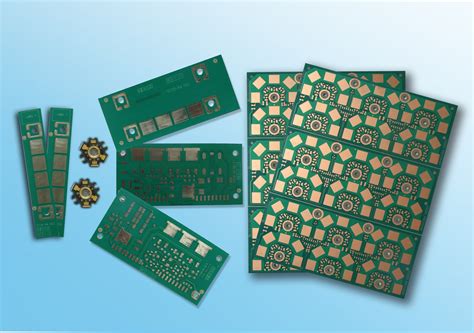
ALL ABOUT FLEX PCB
-
What are chamfered mechanical holes?
Posted by
–
 Read more: What are chamfered mechanical holes?
Read more: What are chamfered mechanical holes?Introduction to Chamfered holes Chamfered holes are a type of mechanical feature commonly found in various engineering and manufacturing applications. These holes are characterized by a beveled edge or angled transition at the entrance of the hole, which serves several important purposes. In this comprehensive article, we will delve into […]
-
What is the finished hole size?
Posted by
–
 Read more: What is the finished hole size?
Read more: What is the finished hole size?Factors Affecting Finished Hole Size Several factors can influence the finished hole size, leading to deviations from the intended diameter. These factors include: Drill Bit Size and Tolerance The drill bit size is the primary factor that determines the finished hole size. However, drill bits are manufactured with certain tolerances, […]
-
What are Carbon Contacts?
Posted by
–
 Read more: What are Carbon Contacts?
Read more: What are Carbon Contacts?History of Carbon Contacts The use of carbon contacts dates back to the early 20th century when they were first developed for use in telegraph systems. At the time, carbon was chosen as a contact material due to its high electrical conductivity and resistance to wear and oxidation. As technology […]
-
 Read more: MCPCB: Metal Core PCB for LED and Thermal Management
Read more: MCPCB: Metal Core PCB for LED and Thermal ManagementIntroduction to MCPCB Metal Core Printed Circuit Boards (MCPCBs) are a specialized type of PCB that uses a metal substrate instead of the traditional FR-4 material. The metal substrate, typically aluminum, provides excellent Thermal Conductivity, making MCPCBs ideal for applications that generate significant heat, such as high-power LED lighting and […]
-
PCB Vias Types Design Covering
Posted by
–
 Read more: PCB Vias Types Design Covering
Read more: PCB Vias Types Design CoveringWhat are PCB Vias? Printed Circuit Board (PCB) vias are small holes drilled through the board to create electrical connections between different layers of a multi-layer PCB. Vias allow signals to pass from one layer to another, enabling more complex circuit designs and more efficient use of board space. They […]
-
Speed control for PCB drill
Posted by
–
 Read more: Speed control for PCB drill
Read more: Speed control for PCB drillIntroduction to PCB drilling and the Need for Speed Control Printed Circuit Boards (PCBs) are essential components in modern electronics. They provide a platform for mounting and interconnecting electronic components to create functional circuits. One critical aspect of PCB manufacturing is drilling holes for through-hole components, vias, and mounting purposes. […]
-
What are through holes on a PCB?
Posted by
–
 Read more: What are through holes on a PCB?
Read more: What are through holes on a PCB?Introduction to PCB Through-Holes Printed Circuit Boards (PCBs) are essential components in modern electronics, providing a platform for interconnecting various electronic components. One of the key features of PCBs is the presence of through holes, which play a vital role in the assembly and functionality of electronic devices. In this […]
-
Multilayer Standard Builds
Posted by
–
 Read more: Multilayer Standard Builds
Read more: Multilayer Standard BuildsWhat are Multilayer Standard Builds? Multilayer standard builds, also known as StandardBuilds, refer to a construction methodology that involves the use of pre-designed, standardized building components and systems. These components are carefully engineered to work seamlessly together, allowing for the creation of highly efficient and cost-effective structures. By leveraging the […]
-
Technical Terms and Abbreviations
Posted by
–
 Read more: Technical Terms and Abbreviations
Read more: Technical Terms and AbbreviationsWhat are Technical Terms? Technical terms are words or phrases that have a specific meaning within a particular field or industry. In the context of technology, technical terms are used to describe various concepts, processes, and tools related to computers, software, hardware, and other technological devices. Examples of Technical Terms […]
-
 Read more: What is the cheapest material for plating in PCB?
Read more: What is the cheapest material for plating in PCB?Understanding PCB Plating Materials PCB plating involves depositing a thin layer of metal onto the copper traces and pads of a circuit board. This process serves several purposes: Enhancing electrical conductivity Improving solderability for component assembly Protecting the copper from oxidation and corrosion Providing a better surface finish for aesthetic […]




